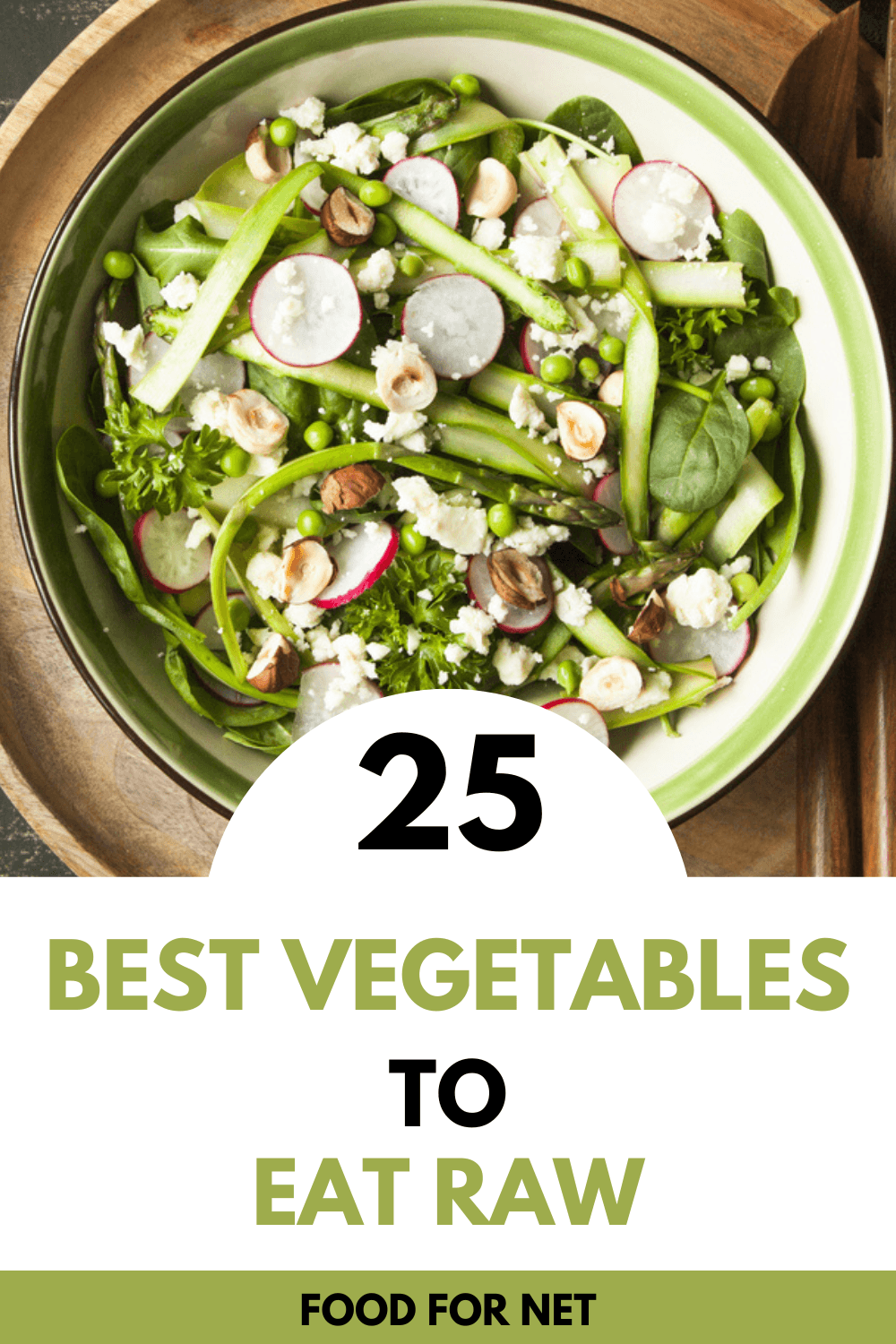
We already know that vegetables are good for us. If you’re into veggies then eating about 200g of vegetables every day is not a big deal. This is assuming that you’re also eating about 200g of fruits because according to WHO, a healthy diet should include at least 400g of fruits and vegetables per day. The best vegetables to eat raw are going to help you contribute to this number in a way that’s delicious and interesting, not just eating to hit a number goal of grams per day.
Keep in mind, the vegetables they referred to, do not count potatoes, cassava, sweet potatoes, and other starchy roots. So, really, can you roughly guess if you’re getting enough vegetables in your diet?
For those who are not a big fan of vegetables, around 200g of veggies a day can be a feat to achieve. Having said that, there are ways for you to include more vegetables in your diet. Juicing is a great and easy way to do that – you’d be surprised at how many vegetables you can eat with just a glass of vegetable juice.
Roasting is an easy, delicious, and appetizing way of presenting veggies on your dinner table, too. There’s also steaming – simple, easy, and absolutely healthy. And when in doubt, simply serve them raw! Yes, there are actually vegetables that are best eaten when raw.
Vegetables are packed with vitamins and minerals and some vitamins, particularly water-soluble ones like vitamin C and the B vitamins, are quite sensitive to heat. There is also a study that says antioxidants in some vegetables are also destroyed in cooking. So, while there are vegetables whose nutrient content becomes more bioavailable when cooked, there are also those that are best to eat in their raw form.
And serving raw vegetables can be downright easy. You can simply include salad (in every meal if possible) as a side dish or as an appetizer. Then from there, who knows, perhaps soon enough you can serve salad as the main dish! You can also snack on raw vegetables, say zucchini, snow peas, or broccoli florets and hummus dip. And of course, smoothies! Right? There are so many green smoothie recipes that will surely delight even non-veggie lovers.
So, are you ready to try eating vegetables raw? And besides, it’s really worth a try – raw vegetables are not only healthy, but they can taste really good, too. And to get you off to a good start, here is a list of the best vegetables to eat raw. See which among the vegetables in our list would you like to try first.
Best Vegetables to Eat Raw
Parsnips
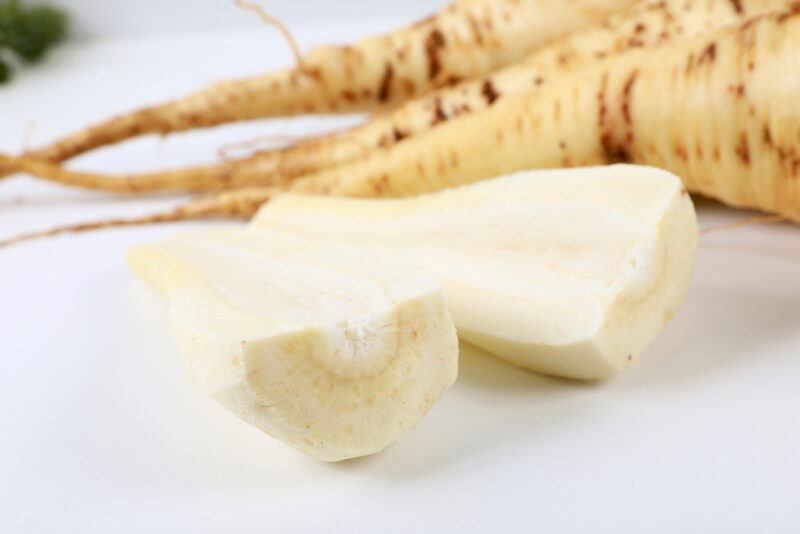
This root vegetable although usually cooked is actually great to eat raw. You can thinly slice parsnips or shred them and simply add them to salads. They actually taste somewhat sweet like a carrot and are starchy like a potato.
Parsnips are rich in vitamin C, a half cup of raw parsnips can give you about 28% of your daily recommended intake. They are also rich in potassium and contain calcium, iron, folate, niacin, riboflavin, magnesium, and vitamin K. They are an excellent source of fiber, which aids in digestion and helps maintain a healthy gut.
They also contain antioxidants, which help combat free radicals in the body, potentially reducing inflammation and the risk of certain diseases. The natural sweetness of parsnips makes them a tasty and healthy addition to a balanced diet, either as a snack or part of a meal
Sunchokes
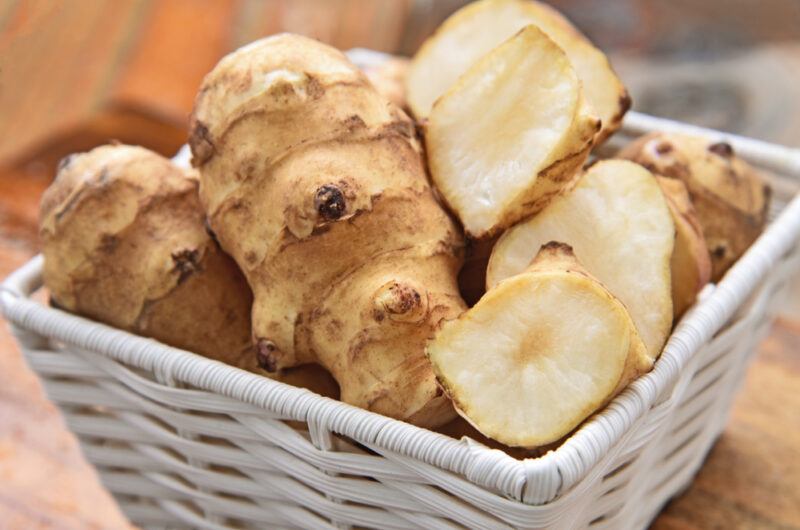
Sunchokes or Jerusalem artichokes are a tuber that is used as a root vegetable. It is sometimes mistaken for a ginger rhizome because they look oddly similar. Just like parsnips, you can simply thinly slice or grate them into your salad. You can also try making a slaw. Raw sunchoke has a slightly sweet and nutty flavor quite similar to a water chestnut.
Sunchokes are high in potassium, in fact, a cup contains about 600mg of potassium, which is essential for maintaining healthy blood pressure and proper muscle function. Additionally, they contain iron, which is vital for blood health, and a moderate amount of protein, which is unusual for a root vegetable. The vegetable also contains magnesium, calcium, iron, zinc, selenium, manganese, and vitamins C, A, E, and K.
Their low glycemic index makes them a good choice for people managing diabetes. The raw form of sunchokes retains all these nutrients effectively, making them a valuable addition to a healthy diet.
Asparagus
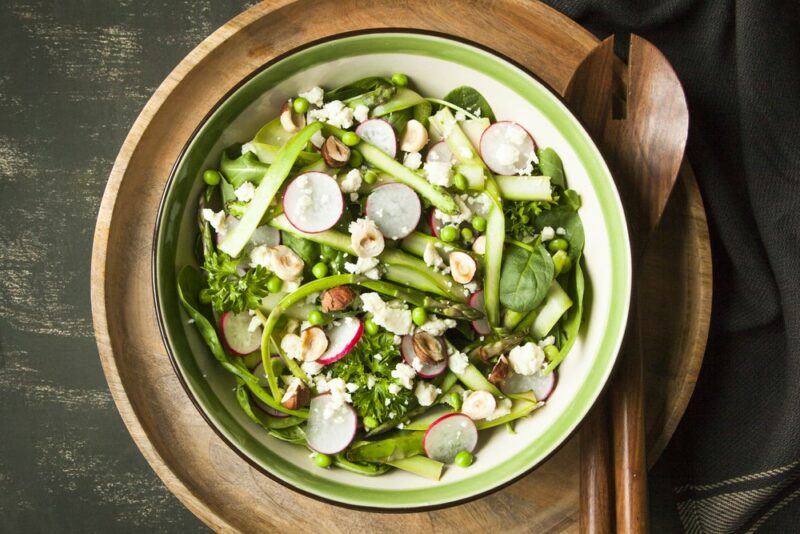
Did you know that asparagus can be eaten raw? This might seem surprising, as the vegetable is pretty tough and is normally cooked.
The trick is to slice asparagus thinly. This gets around the toughness and makes asparagus easy to enjoy. You can also marinate whole asparagus spears. These taste amazing and the marinade reduces the toughness notably.
Rich in vitamins and minerals, it’s an excellent source of Vitamin K, essential for blood clotting and bone health. Asparagus is also high in folate, which is crucial for cell growth and DNA formation, making it a great dietary choice for pregnant women.
This vegetable is low in calories but high in soluble and insoluble fiber, promoting digestive health and aiding in weight management. Asparagus contains antioxidants like vitamins E and C, and flavonoids, which combat oxidative stress and may lower the risk of chronic diseases.
Eating asparagus raw ensures that its vitamins, which can be diminished during cooking, are retained at their highest levels. Raw asparagus has a distinct, mildly bitter and grassy flavor, and can be thinly sliced or shaved into salads, adding a crisp, nutritious element to meals.
Bean Sprouts
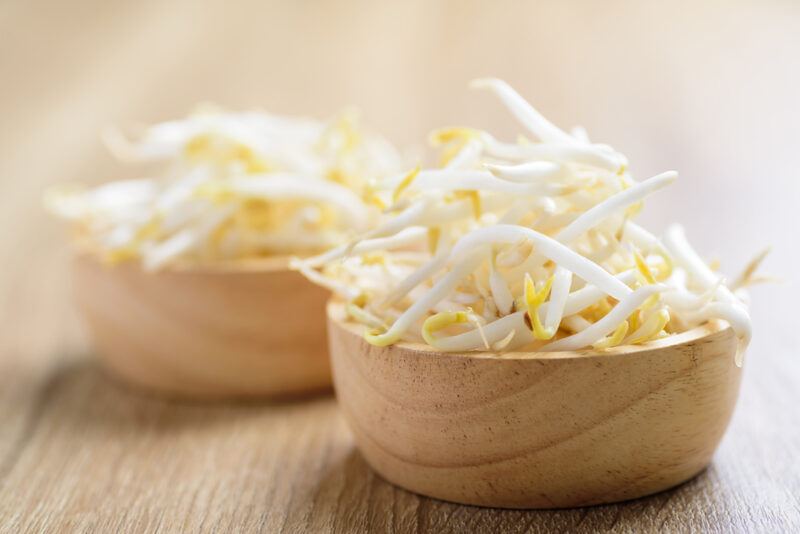
You can eat bean sprouts raw as toppings for salad or as the salad itself. They will make a great crunchy addition to sandwiches as well. Try also adding them to soups. Raw bean sprouts have a nutty flavor with a unique fresh bitter taste.
Bean sprouts are rich in vitamin C and can give you 23% of the recommended daily dose. They’re also high in fiber and protein. It also contains calcium and iron.
Rich in protein and fiber, bean sprouts are a great choice for those looking to add plant-based protein to their diet. The fiber content aids in digestion and promotes a feeling of fullness, which can be beneficial for weight management.
Bean sprouts also contain a variety of antioxidants and phytochemicals that can help reduce oxidative stress in the body, potentially lowering the risk of chronic diseases. Their high water content makes them hydrating and low in calories, making them a healthy addition to salads, sandwiches, and stir-fries. Eating them raw preserves their crisp texture and ensures maximum nutrient retention.
Make sure to only eat bean sprouts labeled ‘ready-to-eat’ (or you can simply grow your own). If they don’t have this label, they’re not safe raw and should be steamed first. Additionally, anyone with a compromised immune system should always cook bean sprouts before eating them.
Beets
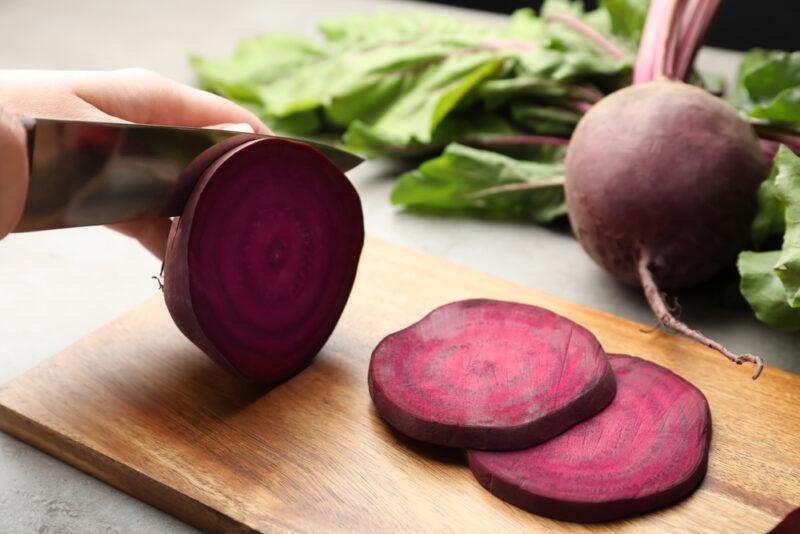
You can finely grate raw beets into salads or use them as a garnish to soups. You can also slice them thinly and simply drizzle them with a chili and lemon dressing. And yes, you can even juice them. Raw beets have an earthy taste with hints of bitterness and sweetness at the same time.
Beets are an excellent source of folate. They also contain vitamin C, magnesium, phosphorus, and trace amounts of vitamin A, calcium, iron, thiamine, riboflavin, vitamin B6, copper, and selenium.
One of the standout benefits of beets is their high content of nitrates, which the body converts into nitric oxide. This compound aids in blood vessel dilation, potentially leading to improved blood flow and lower blood pressure. Beets are also packed with antioxidants, particularly betalains, which give them their distinctive color and have anti-inflammatory and detoxification properties.
Eating beets raw maximizes their nutritional content, as some vitamins can be lost during cooking. Raw beets have a sweet, earthy flavor and a crisp texture, making them a great addition to salads, smoothies, and juices. They can also be grated or spiralized to add a nutritious and colorful touch to meals.
Broccoli
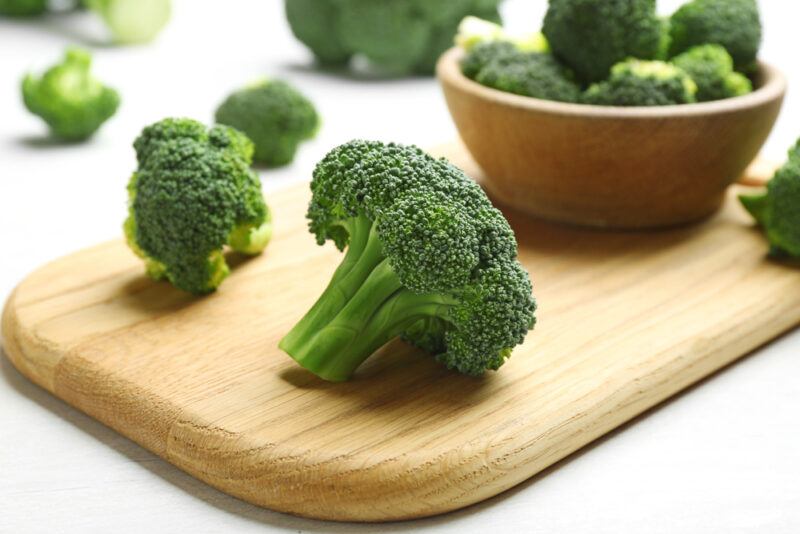
Raw broccoli will be perfect for a garden salad, and is also useful as a topping for meals, in slaw, and as part of a veggie platter (it can also be frozen if you have too much of it). Pasta salad with raw broccoli is also a must-try. When eating broccoli raw, make sure to cut the florets just far enough down the stems to keep them together.
Broccoli is rich in vitamin C, a cup of broccoli can give you as much vitamin C as an orange would. It also contains iron, calcium, phosphorus, potassium, thiamin, riboflavin, zinc, niacin, folate, and vitamins A, B6, B12, D, E, and K. As a result, there are plenty of potential health benefits.
This cruciferous vegetable contains high levels of fiber, which is beneficial for digestive health and can aid in maintaining a healthy weight. The fiber in broccoli also helps in controlling blood sugar levels by slowing down glucose absorption.
Broccoli is noted for its high content of sulforaphane, a potent compound with anti-inflammatory and potentially cancer-preventive properties. Eating broccoli raw ensures the maximum retention of sulforaphane, as cooking can diminish its levels.
In addition to these benefits, raw broccoli offers a crisp texture and a slightly bitter yet pleasant taste. It can be a refreshing addition to salads, a healthy snack with dips, or blended into smoothies for a nutritious boost.
You’ll need to be careful though, as vegetables from this family can be difficult to digest, particularly when they’re raw. Some people experience considerable digestive side effects, like stomach cramps and gas. If you’re sensitive in this way, you might need to cook your broccoli instead of having it raw.
Collard Greens
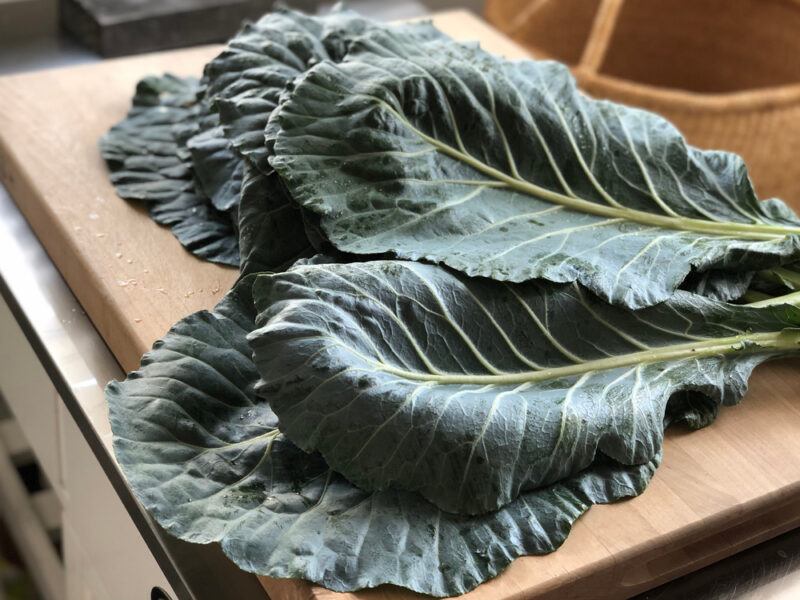
Raw collard greens are perfect for salads and slaws. They are also great for sandwiches and wraps. You can also try a lot of smoothie recipes with collard greens in them. Collard greens have a flavor that is a cross between kale and cabbage, so it has that earthy taste with hints of bitterness.
Collard greens are an excellent source of calcium and vitamins A and C. They also contain vitamin K and B6, iron, magnesium, niacin, thiamin, pantothenic acid, and choline.
Collard greens are also a good source of calcium, important for bone strength and muscle function, and magnesium, which is essential for many biochemical reactions in the body. Additionally, they contain dietary fiber, which promotes digestive health and can aid in blood sugar regulation.
These greens are also packed with antioxidants and phytonutrients, which may help reduce inflammation and lower the risk of certain diseases. The glucosinolates found in collard greens, similar to other cruciferous vegetables, have been studied for their cancer-preventive properties.
Eating collard greens raw, such as in salads or as wraps, ensures that you get the maximum nutritional benefits, as some nutrients can be lost during cooking. They have a slightly bitter, earthy flavor, which can be a great complement to sweeter or tangier salad ingredients.
Cauliflower
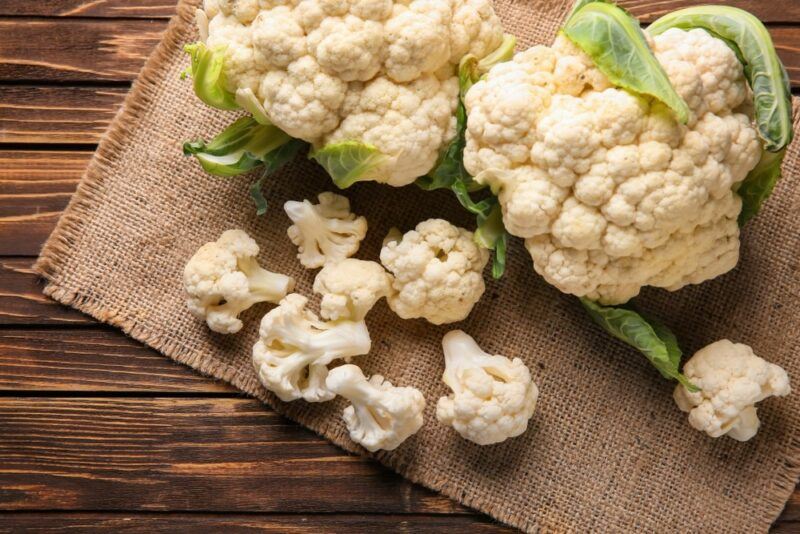
Like broccoli, cauliflower can be excellent raw (it freezes well too, which is fantastic if you have too much cauliflower on hand). It provides a large number of nutrients and plenty of fiber. Some of the plant-based compounds may also help to reduce inflammation and perhaps even decrease the risk of cancer.
Cauliflower is also high in fiber, which is beneficial for digestive health and can aid in maintaining a healthy weight. This vegetable is known for its high choline content, an essential nutrient that supports brain health and development.
Rich in phytonutrients and antioxidants, cauliflower helps combat oxidative stress and may reduce the risk of chronic diseases. It also contains compounds like sulforaphane, which is thought to have anti-cancer properties and helps in detoxifying the body.
Eating cauliflower raw ensures the preservation of its key nutrients, as some can be lost during cooking. Raw cauliflower has a crisp texture and a mild, slightly nutty flavor, making it versatile in dishes like salads, as a crunchy snack with dips, or chopped into rice-like pieces as a low-carb alternative to grains.
You could eat it just like raw broccoli or try making cauliflower rice instead. Cauliflower rice is often sauteed, that’s true, but it doesn’t have to be. You can safely eat it raw. The raw version even works better in some recipes.
Arugula
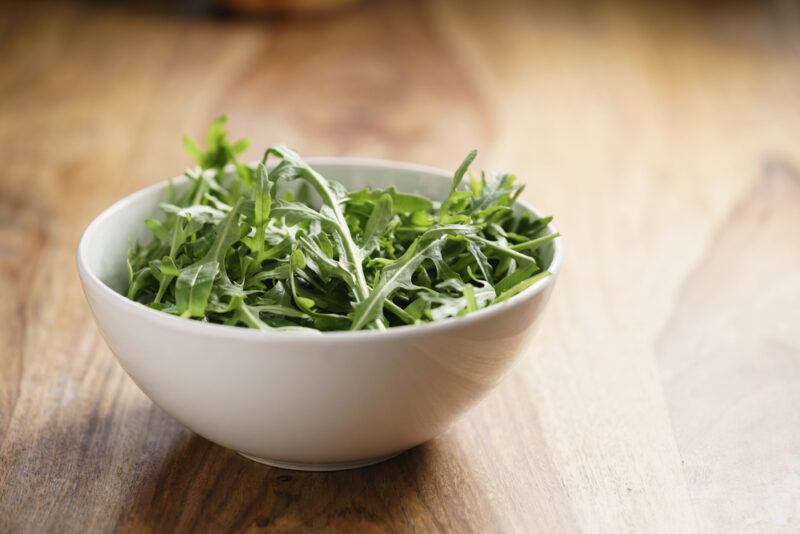
Raw arugula is not just for salads, it can be a great topping for pizzas and nachos and a fantastic addition to sandwiches and wraps. And just like collard greens, argula makes for a useful base to green smoothies. It has a bright, peppery, tart, and slightly bitter taste that works well in many situations.
Arugula has high levels of antioxidants, fiber, and phytochemicals. It is an excellent source of vitamin K and also contains vitamin C, iron, folate, potassium, magnesium, and provitamin A.
Arugula is also a great source of calcium, which is important for bone strength and teeth health, and folate, a vital nutrient especially important during pregnancy for fetal development. Additionally, it contains high levels of nitrates, which have been shown to lower blood pressure, enhance athletic performance, and improve blood flow.
The peppery green is low in calories but high in fiber, which aids in digestion and promotes a feeling of fullness, supporting weight management. The antioxidants and phytochemicals in arugula, such as glucosinolates and flavonoids, may reduce inflammation and lower the risk of certain types of cancer.
Eating arugula raw, like in salads, sandwiches, or as a topping for pizzas, ensures that its nutrients are fully intact, as cooking can sometimes reduce their potency. Its bold flavor adds a delightful, spicy kick to any dish.
Lettuce
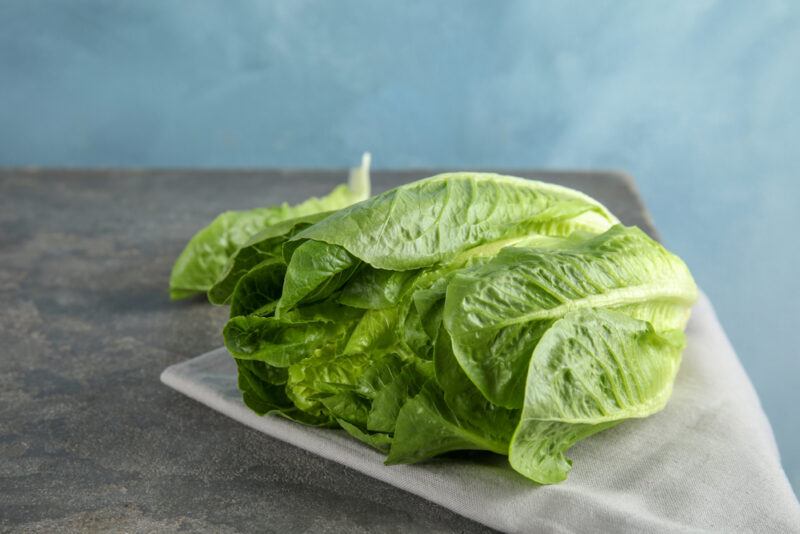
Raw lettuce is not just for salads and wraps. You can also try topping it like you would a cracker. Some people even make wraps using lettuce instead of bread. And since it’s mainly water, try juicing the vegetable too. Or perhaps another green addition to your green smoothies. Raw lettuce has a crisp, mild, buttery, and peppery taste.
Depending on the variety, its nutritional contents also vary. But generally, almost all lettuce contains a good amount of vitamin A and small amounts of vitamin C and iron.
Lettuce varieties, including romaine, butterhead, and iceberg, are high in water content, making them refreshing and hydrating. They also contain fiber, which is beneficial for digestive health and can aid in maintaining a healthy weight. Fiber helps in promoting a feeling of fullness and regulating bowel movements.
This leafy green is low in calories but can be a valuable source of antioxidants, such as beta-carotene, lutein, and zeaxanthin. These compounds help protect the body from oxidative stress and may reduce the risk of certain chronic diseases.
Eating lettuce raw is the best way to preserve its water content and nutrients. Raw lettuce is a versatile ingredient, perfect for salads, wraps, sandwiches, and as a garnish for various dishes, adding a crisp texture and a mild, sometimes slightly sweet or buttery flavor.
Radishes
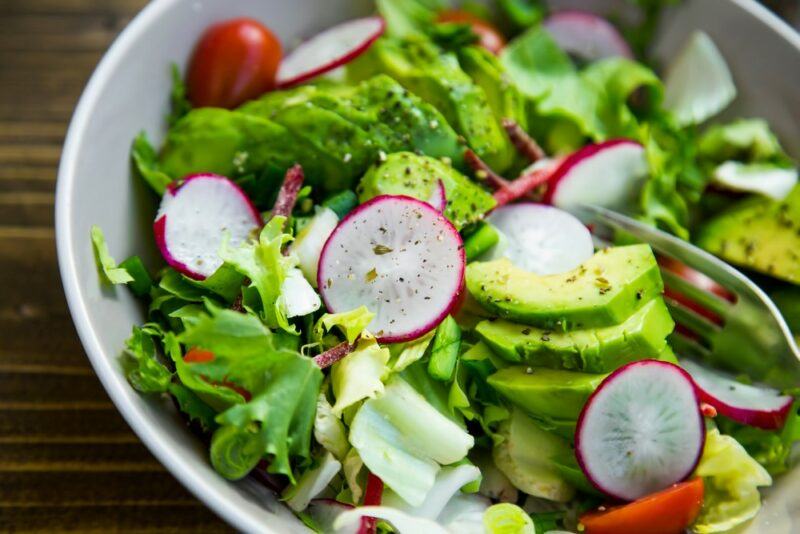
Radishes are much better served raw than cooked. They offer a fantastic crunch, along with a distinct peppery flavor. You’ll often see radishes sliced thinly on salads or served in sandwiches.
Once again, there are plenty of health benefits. Some of these come from plant-based antioxidant compounds, which can help to decrease inflammation and protect your heart.
These vegetables are packed with antioxidants, including isothiocyanates, which are known for their anti-cancer properties. These compounds may help in detoxifying the body and protecting against certain types of cancer. Radishes also contain small amounts of folate, vitamin B6, and calcium.
The fiber in radishes contributes to digestive health, supporting regular bowel movements and aiding in the prevention of constipation. This fiber also plays a role in blood sugar regulation by slowing the absorption of glucose.
Consuming radishes raw, such as in salads or as a garnish, preserves their pungent flavor and crunchy texture, enhancing dishes with a zesty bite. Their crispness and slightly spicy taste make raw radishes a refreshing addition to a variety of meals, from tacos to sandwiches. Eating them this way ensures you receive their full nutritional benefits, as some nutrients can diminish when cooked.
However, it’s important to be careful with radishes. As with broccoli and cauliflower, raw radishes can be difficult to digest and some people experience side effects from them.
Onions
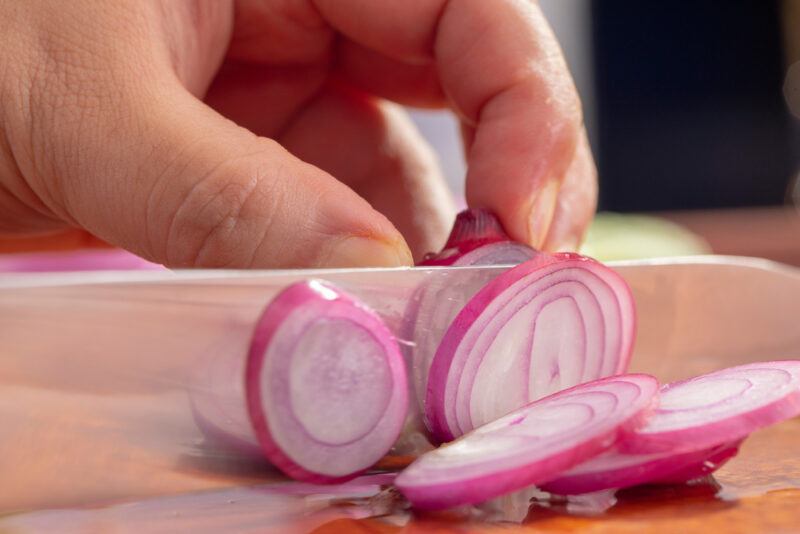
Raw onions will surely give your guacamole a lovely kick. They add another layer of flavor and texture, too, to your tartar sauce. You can also thinly slice the onions and simply add them to salads, salsas, and toppings for burgers or sandwiches. Raw onions have a sharp and pungent flavor with a crisp and crunchy texture. You can lessen their astringent flavor by soaking them in cold water for a few minutes.
Onions are mostly water, carbs, and fiber. They’re rich in antioxidants and plant compounds, while also containing a decent amount of vitamin C, vitamin B6, folate, and potassium.
Onions are notable for their high content of flavonoids, particularly quercetin, which has antioxidant and anti-inflammatory properties. These compounds can help combat oxidative stress and may reduce the risk of chronic diseases like heart disease and cancer.
Additionally, onions have sulfur-containing compounds that have been studied for their potential to lower blood sugar levels and improve bone health. The high prebiotic fiber content in onions is beneficial for gut health, as it feeds beneficial gut bacteria and helps maintain a healthy intestinal environment.
The distinct, sharp flavor of raw onions makes them a popular addition to salads, salsas, and sandwiches. They add a burst of flavor and a crunchy texture, enhancing the overall taste profile of a dish. Eating onions raw ensures you get the most of their nutrients and bioactive compounds, as cooking can reduce some beneficial properties.
Zucchini
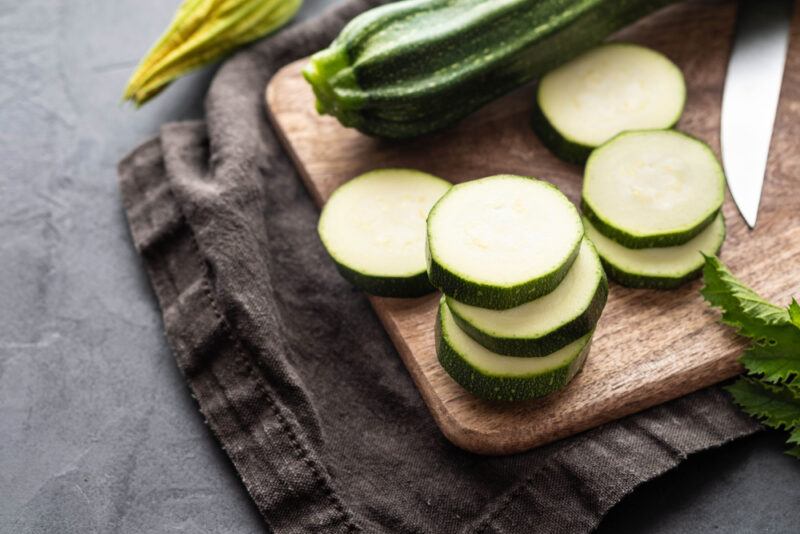
First of all, zoodles, right? Make use of that spiralizer and make some zucchini pasta. Zucchinies are also great for wraps and salads. You can also try juicing zucchinis or adding them to your smoothies. They can even be used as a smoothie base. Raw zucchini has a mild, slightly sweet, and bitter taste.
Zucchinis are amazing sources of antioxidants that include lutein and zeaxanthin. They’re also a great source of folate, potassium, and vitamin A.
This vegetable contains a variety of antioxidants, such as lutein and zeaxanthin, which are beneficial for eye health, protecting against age-related macular degeneration and cataracts. Zucchini is also a source of manganese and vitamin A, which are important for metabolism and maintaining healthy vision, respectively.
The dietary fiber in zucchini promotes healthy digestion and can aid in managing blood sugar levels by moderating the absorption of sugar into the bloodstream. This fiber content also contributes to a feeling of fullness, which can be helpful for weight management.
Eating zucchini raw, such as in salads, spiralized as zoodles, or as a crunchy snack, preserves its mild flavor and nutrients. Raw zucchini adds a refreshing element to dishes, and its subtle taste makes it a perfect canvas for a variety of flavors and dressings. Consuming it in its raw state ensures the maximum retention of its vitamins and antioxidants.
Bell Peppers

Raw red bell peppers will make for a great snack, simply slice them up and serve it with hummus. They’re also a great addition to salads. You can also add them in smoothies – for starters apple and red bell pepper is a great combination. Raw red bell pepper has a mild, sweet, and fruity taste.
In fact, many people say that raw bell peppers are better than cooked ones.
Red bell pepper is rich in vitamin C, in fact, a cup of sliced red bell pepper can provide up to 195% of recommended daily intake, far surpassing the amounts found in typical citrus fruits, which is crucial for immune function, skin health, and collagen synthesis. Bell peppers also provide a good amount of vitamin A, important for vision and immune health. They also contain folate, potassium, and vitamins K1, E, and A.
These vegetables are known for their high antioxidant content, including beta-carotene, quercetin, and luteolin. These compounds can help protect against oxidative stress and may lower the risk of various chronic diseases. Bell peppers also contain a modest amount of fiber, which supports digestive health and can help in maintaining healthy blood sugar levels.
Eating bell peppers raw is a great way to enjoy their crisp texture and sweet, slightly tangy flavor. They are a popular addition to salads, sandwiches, and as a healthy snack with dips. Consuming them in their raw form ensures that their rich vitamin C content is fully preserved, as this nutrient can be somewhat diminished through cooking. Their variety of colors – red, yellow, orange, and green – not only adds visual appeal to dishes but also indicates a slightly different nutrient profile, with red peppers being the most nutritionally dense.
You can eat green and yellow peppers raw as well. These aren’t as sweet as red peppers, but they’re still very tasty.
Kohlrabi
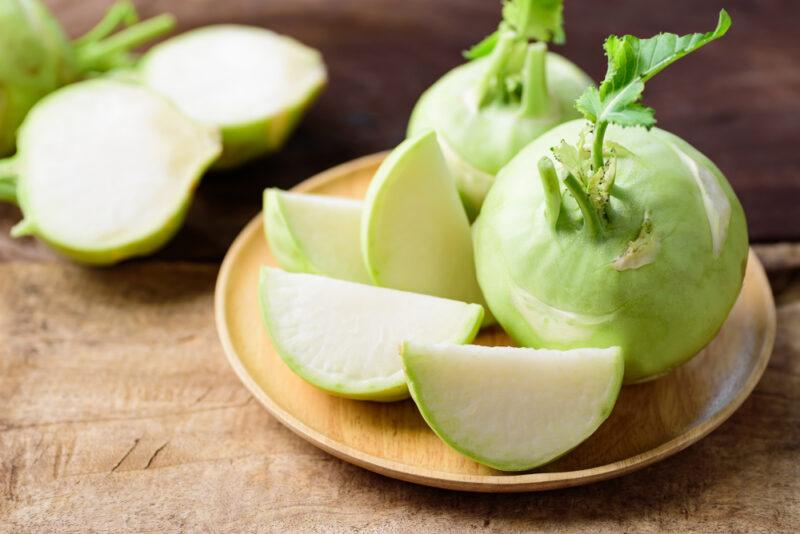
Kohlrabi, also called turnip cabbage or German turnip, can be eaten raw. You can simply slice, grate, or julienne raw kohlrabi into your salad or slaw. Since it belongs to the cabbage family, it has a familiar sweet and peppery flavor. The texture can be compared to that of broccoli stalks.
Part of the cruciferous vegetable family, it’s a good source of vitamin C, essential for immune function, collagen synthesis, and the absorption of iron from plant-based foods. Kohlrabi is also rich in dietary fiber, which supports digestive health and can assist in maintaining healthy blood sugar levels.
This vegetable provides important minerals like potassium, essential for heart health and proper muscle function, and copper, which is involved in energy production and the formation of connective tissue. Kohlrabi also contains a range of antioxidants, such as isothiocyanates and sulforaphane, compounds known for their potential cancer-fighting properties.
Raw kohlrabi has a crisp texture and a mildly sweet, slightly peppery flavor, reminiscent of a cross between a cabbage and a turnip. It can be sliced or cut into sticks and added to salads or used as a crunchy snack with a dip. Eating kohlrabi raw ensures the preservation of its nutrients and phytochemicals, maximizing its health benefits. The unique taste and texture of kohlrabi make it a delightful addition to a variety of dishes, offering both nutritional value and culinary interest.
Artichokes
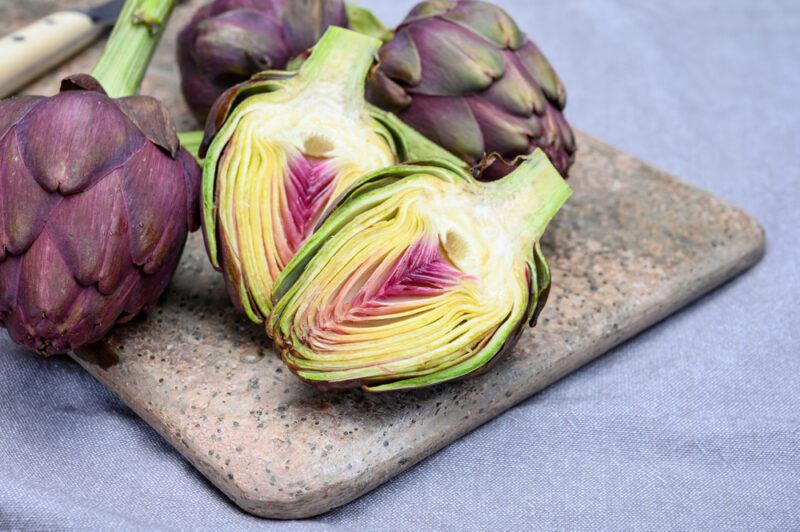
The heart of raw artichokes is perfect for salads. Simply slice them thinly and dress them with lemon juice to prevent browning. Raw artichokes have a mild slightly nutty taste with hints of bitterness, they’re actually quite similar to Brussels sprouts or asparagus.
Artichokes are high in fiber and also contain vitamin C, potassium, magnesium, and folate. They are also one of the vegetables with the highest antioxidant content.
Rich in antioxidants, including cynarin and silymarin, artichokes have liver-protective properties and can aid in digestion and detoxification. These antioxidants also help to reduce inflammation and oxidative stress in the body.
Eating artichokes raw can be a bit challenging due to their tough exterior, but the heart and the inner leaves can be thinly sliced and added to salads. This ensures that the nutrients are preserved and that you get the full benefits of their phytochemicals. Raw artichokes have a slightly bitter, nutty flavor, which can add a unique taste and texture to dishes.
Spinach
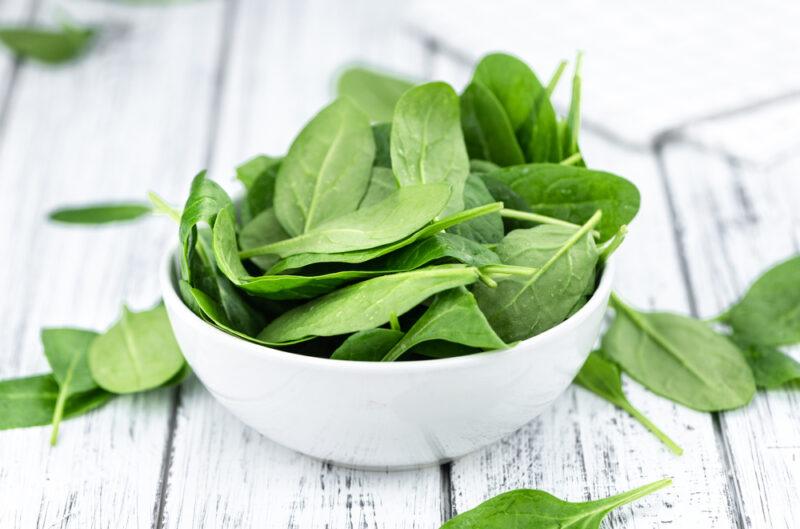
Spinach, especially the young leaves, is perfect for salads. It’s also a great addition to your sandwiches or juices and makes a great base for green smoothies as well. Raw spinach has a mild, green, and slightly sweet taste.
Spinach is an excellent source of vitamins C and K, carotenoids, folic acid, iron, and calcium. It also contains many plant compounds like lutein, kaempferol, nitrates, quercetin, and zeaxanthin.
This vegetable is rich in iron, crucial for the formation of hemoglobin and oxygen transport in the body, making it particularly beneficial for those at risk of anemia. Spinach also contains a good amount of magnesium, important for muscle and nerve function, and calcium, known for its role in bone health.
Spinach is packed with antioxidants, including beta-carotene, lutein, and zeaxanthin, which are beneficial for eye health and may help protect against age-related macular degeneration. The high levels of these antioxidants also combat oxidative stress and inflammation.
Incorporating raw spinach into your diet, such as in salads, smoothies, or as a topping for sandwiches, maximizes its nutrient content, especially the water-soluble vitamins like vitamin C and folate, which can be reduced during cooking. Its mild, slightly earthy flavor and versatility make it a popular choice in a variety of dishes. Consuming spinach raw is a great way to enjoy its numerous health benefits in a convenient and delicious form.
Snow Peas
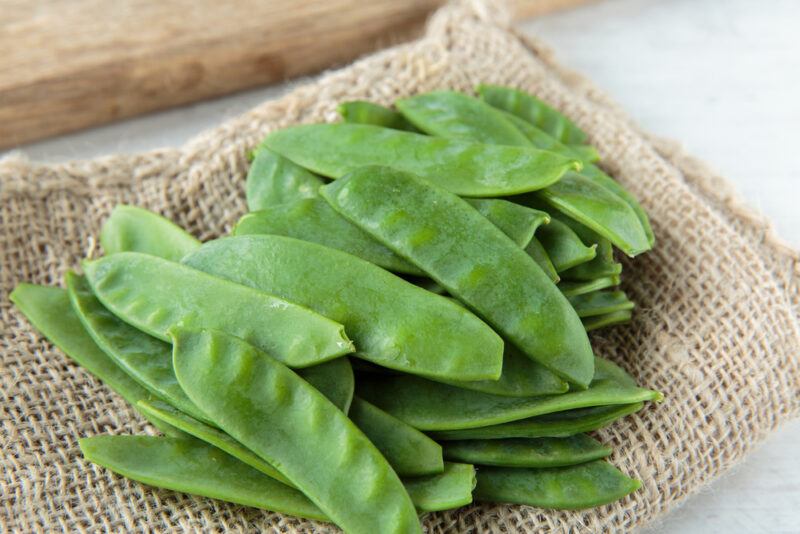
Snow peas are edible pod peas that are flat and thin. Both the seeds and pods are edible. They can be eaten whole and raw as snacks or in salads. Snow peas are mildly flavored, with a somewhat sweet taste, and are also very crisp yet slightly tender.
Snow peas are a rich source of iron, calcium, zinc, copper, selenium, and manganese. They’re also a good source of niacin, pantothenic acid, thiamin, and pyridoxine.
These peas are an excellent source of vitamin C, important for immune function, skin health, and collagen production. They also provide vitamin K, essential for healthy blood clotting and bone formation.
Rich in dietary fiber, snow peas aid in digestive health, helping to regulate bowel movements and maintain a healthy gut. This fiber content also contributes to a feeling of fullness and can help in managing blood sugar levels by slowing down glucose absorption.
Snow peas contain a variety of antioxidants, including carotene and flavonoids, which help reduce oxidative stress and may lower the risk of chronic diseases. They are also a good source of iron, which is crucial for oxygen transport in the body, and folate, important for DNA synthesis and repair.
Eating snow peas raw preserves their crisp texture and sweet flavor, making them a delightful addition to salads, crudité platters, or as a healthy snack. Their crunchy texture and refreshing taste make raw snow peas a popular choice for adding nutritional value and visual appeal to meals. Consuming them in their raw state ensures you receive the maximum benefits from their vitamins and antioxidants.
Sugar Snap Peas
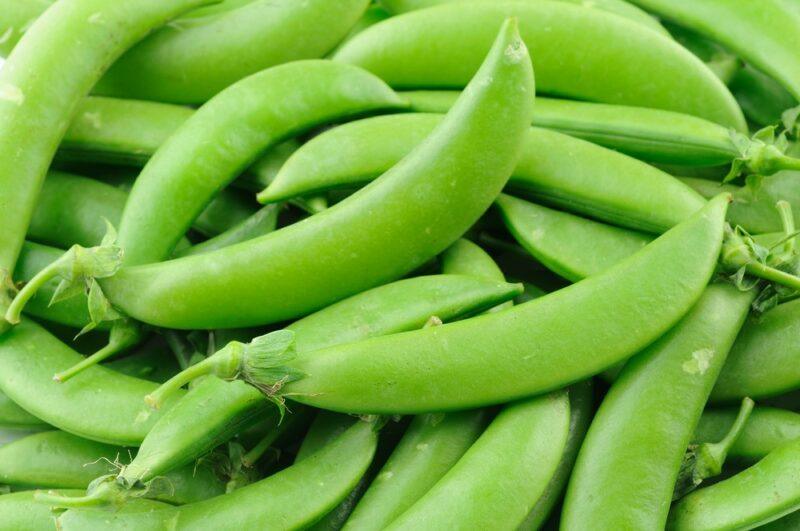
Sugar snap peas are similar to the snow peas that we already talked about and offer the same nutritional benefits. However, sugar snap peas are often preferred for eating raw, as they are packed with flavor. They’re also a little sweeter than snow peas.
In fact, raw sugar snap peas are better than cooked ones, as cooking them decreases their distinctive crunch. Try using raw sugar snap peas in a salad or even just as a snack on their own.
They are an excellent source of vitamin C, crucial for immune support, skin health, and collagen production. Additionally, they provide good amounts of vitamin K, important for blood clotting and bone health.
These peas are rich in fiber, which promotes healthy digestion and aids in maintaining a healthy weight. The fiber in sugar snap peas also helps in stabilizing blood sugar levels, making them a great choice for those managing diabetes.
Sugar snap peas contain a variety of antioxidants, including Vitamin A and phenolic compounds, which combat oxidative stress and may reduce the risk of certain chronic diseases. They are also a source of iron, essential for healthy blood cells, and folate, necessary for cell growth and metabolism.
Eating sugar snap peas raw is a great way to enjoy their natural sweetness and crisp texture. They can be added to salads, served as a snack with hummus or other dips, or simply enjoyed on their own. Their refreshing taste and nutritional profile make them a delightful addition to a balanced diet. Consuming them raw ensures that their rich nutrient content, particularly the vitamins that are sensitive to heat, is fully preserved.
Kale
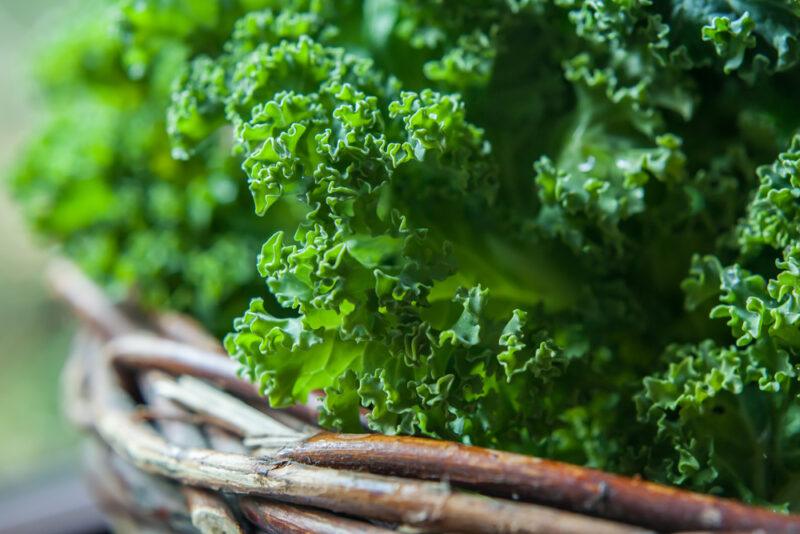
Raw kale, when finely sliced or shredded makes for a great salad base. It’s also perfect for wraps and sandwiches. It will be a welcome addition or a solid base for your smoothie recipes as well. And of course, you can always try juicing it. Raw kale has a strong earthy taste with hints of bitterness. The texture can be dry, tough, and crunchy.
Kale contains vitamins A, C, and K, folate, alpha-linolenic acid, lutein, zeaxanthin, phosphorus, potassium, calcium, and zinc.
This vegetable contains high levels of antioxidants, including beta-carotene, quercetin, and kaempferol, which help reduce oxidative stress and may lower the risk of chronic diseases. Kale is also a good source of minerals like calcium, important for bone health, and potassium, which helps regulate blood pressure.
The dietary fiber in kale promotes healthy digestion and contributes to cardiovascular health by helping to lower cholesterol levels. This fiber also aids in blood sugar regulation and provides a sense of fullness, which can be beneficial for weight management.
Raw kale has a robust, slightly bitter flavor and a hearty texture. It can be massaged with a bit of oil to soften it for salads, added to smoothies for a nutrient boost, or used in sandwiches and wraps. Consuming kale raw ensures you get the maximum benefit from its nutrients, particularly the water-soluble vitamins and phytochemicals that can be sensitive to heat during cooking.
Jicama
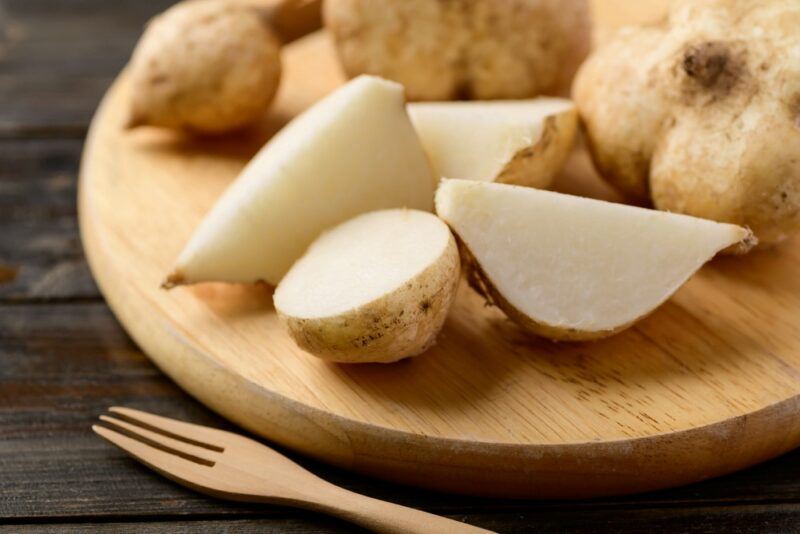
Jicama is an unusual root vegetable that’s becoming increasingly popular. It looks a little like a potato with its brown skin and white flesh. However, the flavor is quite different, as jicama tends to be sweet, mild, and a little nutty.
The vegetable is surprisingly good raw. The raw flesh has a fantastic crunch to it, which works particularly well as part of a salad.
However, it’s important to be a little cautious, as jicama is high in fiber. While fiber is good for you, too much fiber can cause digestive issues. Increasing your fiber intake too quickly can cause problems too, so it’s best to take things slowly.
Watercress
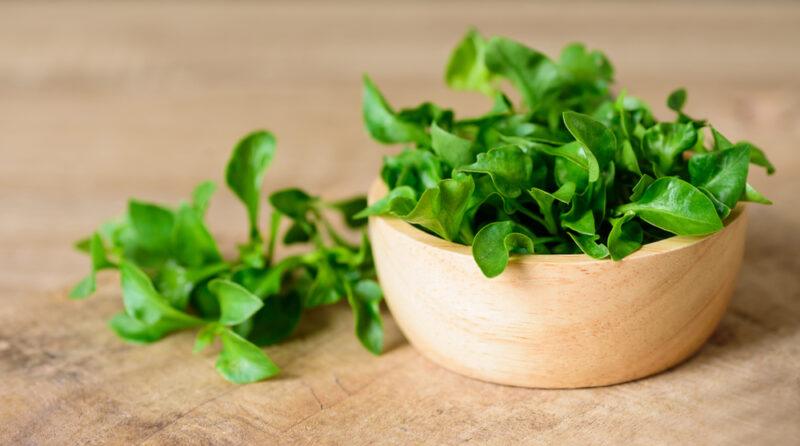
Watercress, also called yellowcress, is an aquatic flowering plant that belongs to the cabbage family. It can be eaten raw as a base for your salad or as an addition to other veggies. It’s a great fresh ingredient in your sandwiches as well.
And of course, don’t forget watercress smoothies! The vegetable actually goes very well with avocado so try that combination as well. Watercress actually has a peppery taste that is quite similar to arugula.
Watercress also provides substantial amounts of vitamin C, essential for immune support, skin health, and collagen production, as well as vitamin A, important for vision and immune function.
This aquatic plant is packed with antioxidants, including beta-carotene and lutein, which help combat oxidative stress and may reduce the risk of chronic diseases. Watercress also contains glucosinolates, compounds that have been studied for their potential anti-cancer properties.
The high water content in watercress contributes to hydration, while its fiber content aids in digestive health and helps in maintaining a healthy gut. This fiber also plays a role in regulating blood sugar levels and can contribute to a feeling of fullness, beneficial for weight management.
Eating watercress raw, such as in salads, sandwiches, or as a garnish, maximizes its nutritional benefits. Its spicy, slightly tangy flavor adds a refreshing and bold taste to dishes. Consuming it in its raw form ensures that its delicate vitamins and antioxidants are preserved, offering a burst of nutrition and flavor.
Celery

We can’t forget celery. This crunchy vegetable is often eaten raw and valued for the crunch that it adds. It’s easy to serve too, just offer celery sticks and dip – perhaps with some sliced carrots, cucumber, and bell peppers as well.
This vegetable is well-known for its high water content, making it hydrating and beneficial for skin health. The fiber in celery supports digestive health and helps in maintaining a healthy gut. Additionally, this fiber can aid in regulating blood sugar levels and contributes to a feeling of fullness, which is helpful for weight management.
Celery contains phytochemicals like phthalides, which have been shown to help lower blood pressure and improve circulatory health. It also has anti-inflammatory properties, largely due to its antioxidant content, including flavonoids and vitamin C.
Eating celery raw, as in salads, as a crunchy snack with dips, or juiced, is an excellent way to enjoy its fresh flavor and retain its nutritional value. The crisp texture and mildly salty, earthy taste of raw celery make it a versatile addition to a variety of dishes, enhancing both flavor and nutrition.
Celery has also been linked to many health benefits, such as improving digestion and heart health, while decreasing the risk of various diseases. You’ll get many of those benefits from celery juice as well, but celery is even more powerful, as you’re getting fiber as well.
Carrots
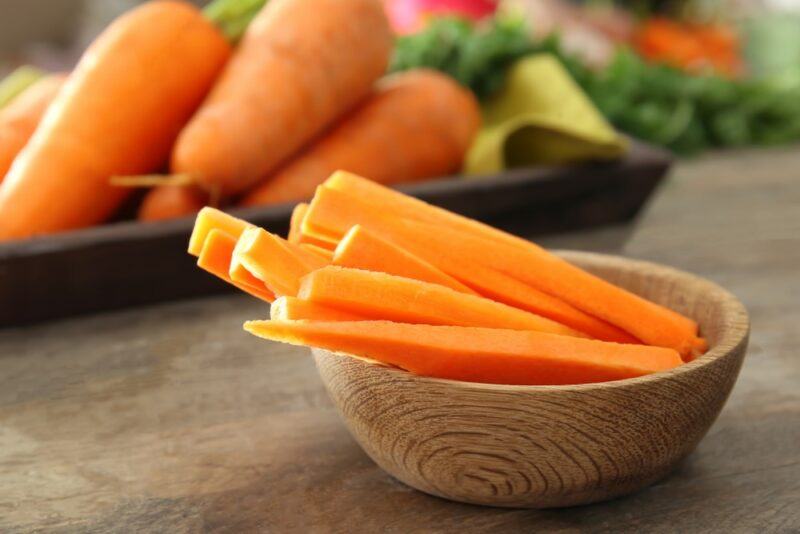
Carrots have a fantastic crunch when you eat them raw. They’re often served with dip, but are just as tasty on their own without anything added.
Carrots are particularly famous for their beta carotene content. Beta carotene is an important pigment molecule that our bodies can convert into vitamin A. Beta carotene is also an antioxidant, meaning it can help to decrease oxidative stress and inflammation. You can also experiment with other varieties of carrots, including yellow and purple ones.
Carrots are rich in antioxidants, including lutein and zeaxanthin, which are beneficial for eye health and may help protect against age-related macular degeneration. The high fiber content in carrots aids in digestion, contributes to gut health, and can help regulate blood sugar levels.
These vegetables contain various bioactive compounds like polyacetylenes, which have been studied for their potential anti-inflammatory and anticancer effects. The fiber in carrots also promotes a sense of fullness, which can be helpful for weight management.
Eating carrots raw, such as in salads, as a snack with dips, or shredded in sandwiches, preserves their natural sweetness and crunch. This ensures the maximum retention of their nutrients, particularly the delicate vitamins and antioxidants. Their bright color and sweet, earthy flavor make raw carrots a popular and versatile addition to a wide range of dishes.
Cucumbers
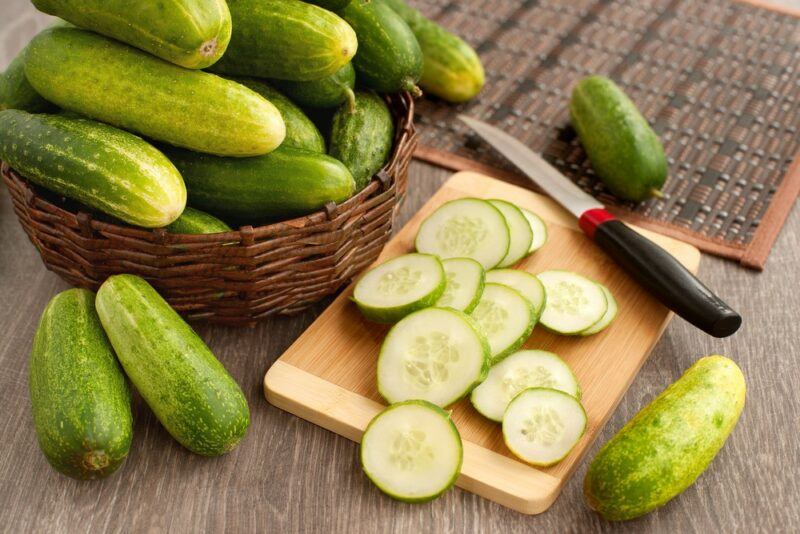
Cucumbers are botanically considered a fruit (like tomatoes, which are delicious raw too), but we treat them like vegetables – so they’re getting included on this list.
Not surprisingly, cucumbers are delicious raw. They have a mild flavor and a delicious watery crunch. They’re very popular as a salad ingredient or served with dip. They are known for their high water content, which makes them excellent for hydration and supporting skin health. Cucumbers are also a good source of vitamin K, essential for blood clotting and bone health.
These vegetables contain antioxidants, including flavonoids and tannins, which can help combat oxidative stress and reduce the risk of chronic conditions. Cucumbers also provide a modest amount of fiber, particularly in the skin, which aids in digestion and helps maintain a healthy gut.
Cucumbers are low in calories but can help in feeling full, making them a great choice for weight management and healthy snacking. They also contain various minerals like potassium, important for heart health and blood pressure regulation, and magnesium, necessary for various bodily functions.
Eating cucumbers raw, as in salads, sandwiches, or as a crunchy snack, is an excellent way to enjoy their crisp texture and mild flavor. They can be spiralized into noodles, blended into smoothies, or simply sliced to add a refreshing element to a variety of dishes. Consuming cucumbers in their raw state ensures the preservation of their vitamins and antioxidants, maximizing their health benefits.
Interestingly, cucumbers can also be cooked. There are recipes for sauteed, stir-fried, and even roasted cucumbers. This suggests that cooked cucumbers are worth trying, although most people stick to the raw option instead.
Tips to Remember When Eating Raw Vegetables
When you’re eating vegetables raw, you want to make sure as much as possible that they are free from any contamination. It’s best if you can have access to organically grown vegetables in your area or if you’re growing them yourself. Otherwise, here are some tips to consider to make sure you’re safely eating raw vegetables.
Be ‘Picky’ With Your Vegetables
When buying vegetables, be picky – choose the ones that are not bruised, damaged, or showing any discoloration. Lightly squeeze to check if they’re firm and avoid those that already have soft spots. Ideally, choose vegetables that are in season.
Be Cautious Of Pre-Prepared Or Pre-Packaged Salads
This is especially true for people with low immunity, the elderly, pregnant women, and children because of the risk of contamination. If you absolutely must buy pre-prepared salads, then make sure to carefully examine the package for any signs of spoilage, check the expiry date, and make sure to refrigerate them.
Avoid Cross-Contamination
From the minute you brought them from the grocery store or farmer’s market, make sure they don’t come in contact with raw food like meats. The same is true when storing the veggies at home in your fridge, freshly cut and ready-to-eat vegetables should be stored above raw fish, meat, or poultry to avoid cross-contamination.
Wash And Prep Them Well
Of course, wash your hands before and after handling your veggies. Make sure you’re using a cutting board that is specifically for vegetables (you should have a separate one for raw meat, poultry, and seafood). Inspect veggies and cut away any bruised or damaged areas, then discard the outer leaves of leafy vegetables. Wash them thoroughly. Use a produce brush for veggies like zucchinis if necessary.
Immediately Consume
Although vegetables can last longer when properly stored, it’s best to quickly consume those that you’re planning to eat raw. Don’t leave them sitting around for long, as their quality can quickly decrease.
This is particularly true for pre-prepared or pre-packed salads. And once you’ve taken them out from the fridge, it’s not advisable to put them back in if they’ve been left at room temperature for more than 4 hours.
Other Things To Consider
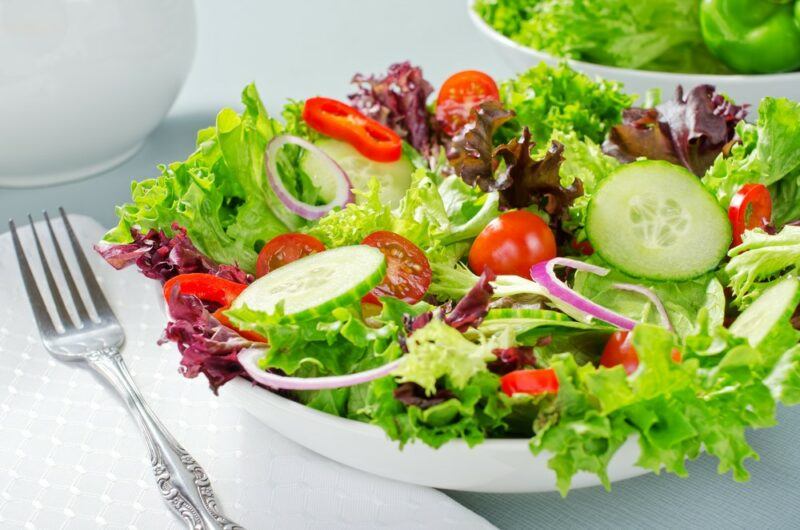
Raw Vegetables Can Be Hard To Digest
While raw vegetables seem healthier, they’re also harder to digest. This can be an issue if you have a sensitive digestive system or if you’re eating large amounts of raw vegetables.
This reinforces the idea of going with what works for you. Pay attention to how your body responds to raw vegetables. Do they make you feel better or worse? If you’re not sure, try swapping some raw vegetables for cooked ones. See if doing so improves your health or makes things worse.
Some Vegetables Cause Side Effects
Some of the vegetables on this list cause side effects like gas, stomach cramps, low blood sugar, and decreased blood pressure, particularly when consumed raw in large quantities. Issues are particularly common with cruciferous vegetables. Some people find that they can’t eat these vegetables raw at all.
You Don’t Necessarily Get More Nutrients
Many people choose raw vegetables for their nutritional benefits. This makes sense, as vegetables lose some nutrients when they’re cooked.
However, the situation isn’t as clear cut as it seems – as vegetables also become easier to digest when they’re cooked. This means that sometimes you get more nutrients from cooked vegetables than from raw ones, as strange as that sounds.
Too Many Vegetables Can Cause Problems
Finally, it often seems like more vegetables must be a good thing, but that’s not always true. Too much of anything can be unhealthy – even vegetables.
One issue is the fiber. While most of us need more fiber, too much fiber can actually lead to digestive issues. You might also find that you’re not getting enough other types of food, which isn’t good for you either.
You might end up with too much of problematic compounds, such as oxalates. So, while it’s important to have plenty of vegetables, some caution is needed.
Are Raw Vegetables Healthier Than Cooked Vegetables?
The healthiness of raw versus cooked vegetables depends on the specific nutrients you’re focusing on and the type of vegetable. Both raw and cooked vegetables have important roles in a balanced diet, and each method of preparation has its advantages:
Advantages of Raw Vegetables:
- Preservation of Water-Soluble Vitamins: Vitamins like C and B vitamins are sensitive to heat, light, and air. Eating vegetables raw ensures these vitamins are not lost during the cooking process.
- Enzymes Intact: Raw vegetables retain their natural enzymes, which can aid in digestion and offer various health benefits. However, the human body also produces these enzymes.
- High in Fiber: Cooking can sometimes break down dietary fiber, so raw vegetables may provide more fiber, aiding in digestion and satiety.
Advantages of Cooked Vegetables:
- Enhanced Bioavailability of Certain Nutrients: Cooking can increase the availability of some nutrients and antioxidants, such as beta-carotene in carrots and lycopene in tomatoes.
- Easier Digestion: Cooking breaks down the cell walls of many vegetables, making them easier to digest and allowing the body to absorb nutrients more efficiently.
- Reduction of Anti-Nutrients: Cooking can reduce the levels of certain compounds (like oxalates in spinach and goitrogens in cruciferous vegetables) that can interfere with the absorption of minerals.
Conclusion:
- Balance is Key: Including both raw and cooked vegetables in your diet is the best approach. The variety ensures you get the broadest range of nutrients.
- Specific Dietary Needs: The choice may also depend on individual health concerns. For example, someone with a compromised digestive system might find cooked vegetables easier to digest.
Overall, both raw and cooked vegetables offer valuable nutrients. The choice of consuming them raw or cooked should depend on personal preference, dietary needs, and the specific nutritional benefits you’re seeking.
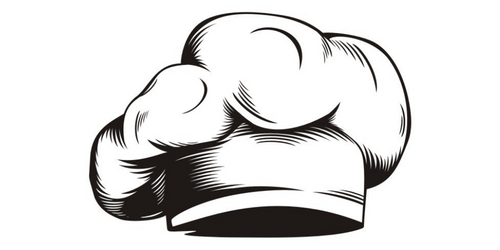
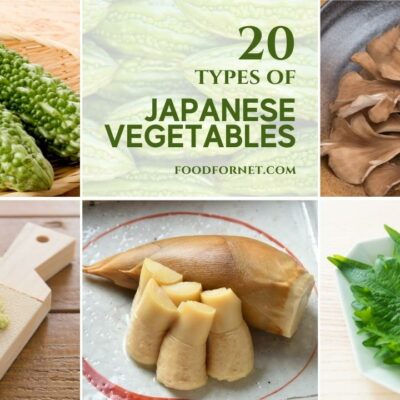
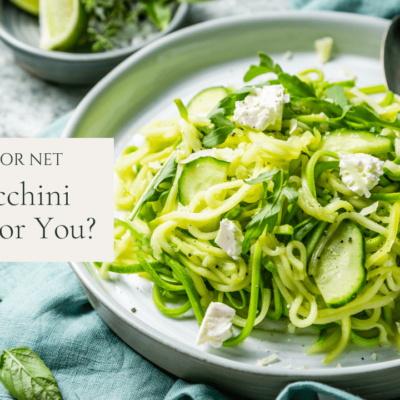



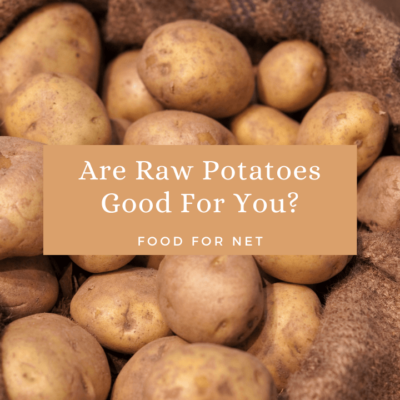
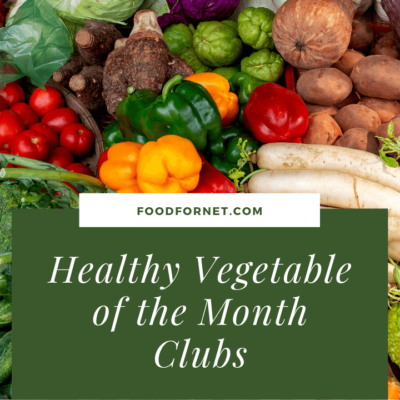
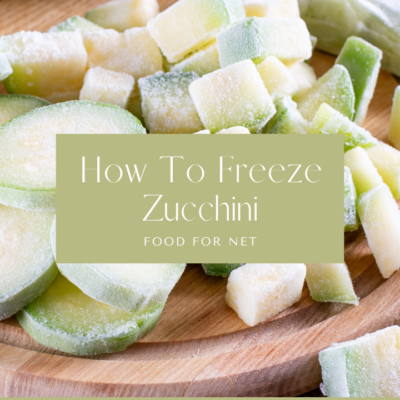
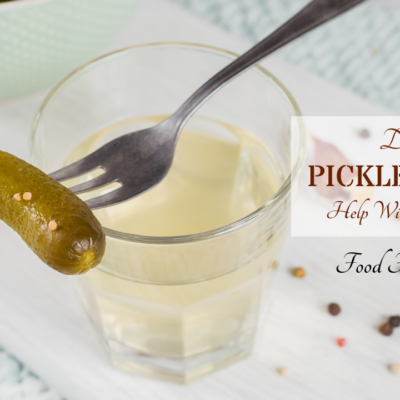
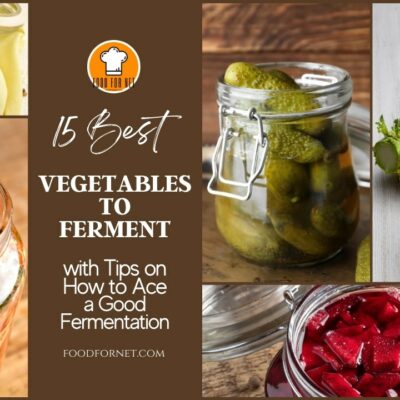
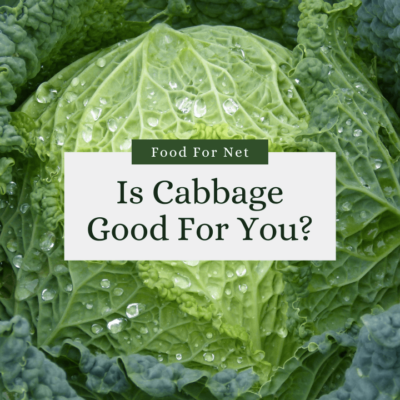
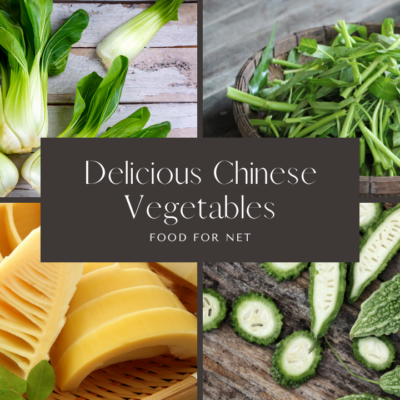
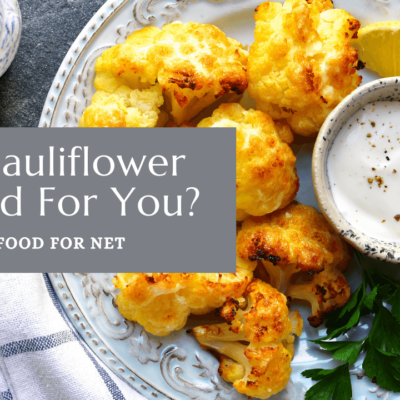
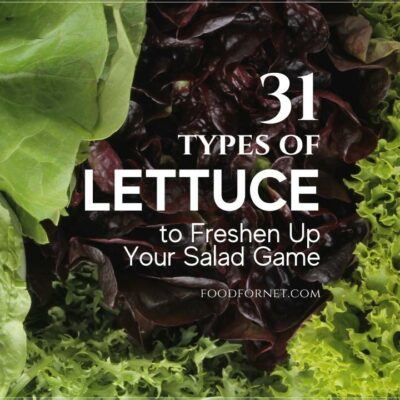
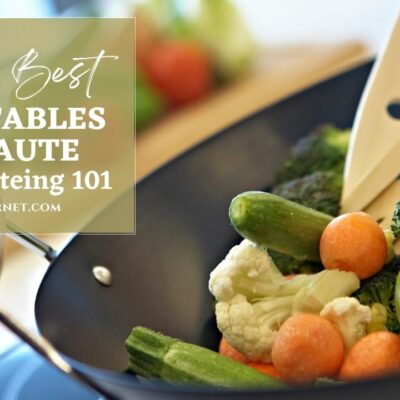

 What To Serve With Ham
What To Serve With Ham
Awesome article
Thank you so much
Thank you!!!!
Article goes with my eating habits made fun of by co workers for years. I’m the winner now at 73 yrs old. I take no medicine. Eat your vegetables is not a passing statement for health. It is a reality for good health. Thanks for this being passed along. God blesses common sense.
My understanding is that bell pepper and cucumber are fruit. Both delicious.